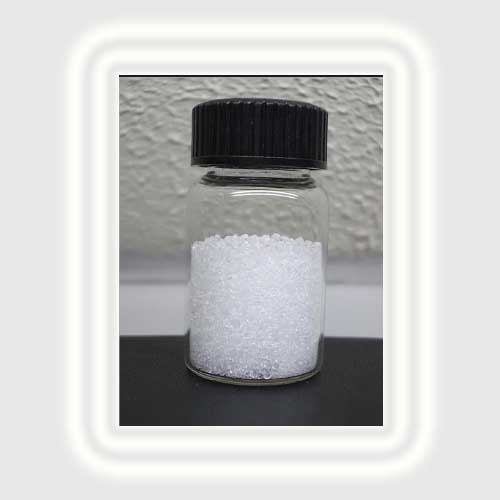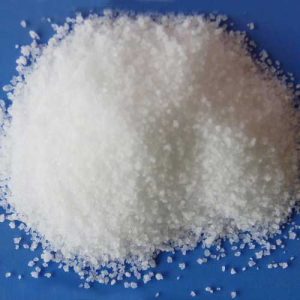- Have any questions?
- 91-22-23726950
- 91-22-23774610

Sodium Feredetate
May 7, 2019
Stannous Fluoride
May 7, 2019Stannous Chloride Dihydrate
Muby Chemicals established in the year 1976, is pioneer in Manufacturing Chemicals for Oil and Gas Exploration, Hydraulic Fracturing (Fracking) and coiled tube Chemicals.Our advanced chemistry leading to an innovative and high-performance product range is coupled with effective on and off site management services.
We are manufacturer of Specialty chemicals, Pharmaceutical Excipients, Fragrance & Flavorchemicals in India, which are of IP, BP, USP, Ph. Eur., FCC or Food Grade, ACS, AR or Analytical Reagent Grade, LR or Laboratory Reagent Grade, Pure and Technical Grades of various chemicals.
Tin(II) chloride, also known as stannous chloride, is a white crystalline solid with the formula SnCl2. It forms a stable dihydrate, but aqueous solutions tend to undergo hydrolysis, particularly if hot. SnCl2 is widely used as a reducing agent (in acid solution), and in electrolytic baths for tin-plating. Tin(II) chloride should not be confused with the other chloride of tin; tin(IV) chloride or stannic chloride (SnCl4).
Stannous Chloride Dihydrate BP Ph Eur
SnCl2,2H2O — 225.6 — 10025-69-1
DEFINITION
Content: 98.0 per cent to 102.0 per cent.
CHARACTERS
Appearance: White or almost white, crystalline powder or colourless crystals, efflorescent in air.
Solubility: Freely soluble in water (the solution becomes cloudy after standing or on dilution), freely soluble in ethanol (96 per cent). It dissolves in dilute hydrochloric acid.
IDENTIFICATION
A. To 1 ml of solution S1 (see Tests) add 5 ml of water R and 0.05 ml of mercuric chloride solution R . A blackish-grey precipitate is formed.
B. Dissolve 1.0 g in 3.0 ml of water R . Add 0.5 ml of dilute sodium hydroxide solution R to the cloudy solution; a yellowish flocculent precipitate is formed. Add 6.5 ml of water R . To
1.0 ml of the previously shaken suspension add 1.0 ml of strong sodium hydroxide solution R ; the precipitate dissolves and the resulting solution is clear and colourless.
C. Dissolve 10 mg in 2 ml of dilute nitric acid R . The solution gives reaction (a) of chlorides.
TESTS
Solution S1: To 0.40 g add 1 ml of dilute hydrochloric acid R and dilute to 20 ml with distilled water R .
Solution S2: Dissolve 1.0 g in dilute hydrochloric acid R and dilute to 30 ml with the same acid. Heat to boiling. Add 30 ml of thioacetamide solution R and boil for 15 min (solution A). Take 5 ml, filter and heat the filtrate to boiling. Add 5 ml of thioacetamide solution R and boil for 15 min. If a precipitate is formed, add the remainder of solution A (solution A’) to the mixture. Add 10 ml of thioacetamide solution R and boil. Repeat the series of operations from “Take 5 ml” until a precipitate is no longer formed on addition of thioacetamide solution R to the filtrate obtained from the 5 ml of solution A (solution A’, solution A”, etc. respectively). If no precipitate is formed or if no more precipitate is formed combine the solution obtained with the remainder of solution A (solution A’, solution A”, etc. respectively), filter and wash the precipitate with 10 ml of water R . Heat the filtrate until the resulting vapour no longer turns a moistened piece of lead acetate paper R blackish-grey. Allow to cool and dilute to 50 ml with water R.
Appearance of solution: The solution is clear and colourless.
Dissolve 10.0 g in dilute hydrochloric acid R and dilute to 20 ml with the same acid.
Substances not precipitated by thioacetamide: Maximum 0.2 per cent.
Evaporate 25 ml of solution S2 to dryness and ignite at 600 ± 50 °C. The residue weighs a maximum of 1 mg.
Sulphates: Maximum 500 ppm, determined on solution S1.
Iron: Maximum 100 ppm.
Heavy metals: Maximum 50 ppm.
ASSAY
Dissolve 0.100 g in 50 ml of water R , freed from oxygen by purging with carbon dioxide or nitrogen for 15 min. Add 1.5 ml of hydrochloric acid R1 , 5 g of sodium potassium tartrate R ,
10 g of sodium hydrogen carbonate R and 1 ml of starch solution R . Titrate immediately with 0.05 M iodine . Carry out a blank titration.
1 ml of 0.05 M iodine is equivalent to 11.28 mg of SnCl2,2H2O.
Stannous Chloride FCC Food Grade
Tin Dichloride
SnCl2 Formula wt, anhydrous 189.60
SnCl2·2H2O Formula wt, dihydrate 225.63
INS: 521 CAS: anhydrous [7772-99-8]
CAS: dihydrate [10025-0969-091]
DESCRIPTION
Stannous Chloride occurs as white or colorless crystals. It is anhydrous or contains two molecules of water of hydration. It is very soluble in water, and it is soluble in alcohol and in
glacial acetic acid.
Function: Reducing agent; antioxidant.
REQUIREMENTS
Identification:
A. Add mercuric chloride TS, drop-wise, to a 1:20 solution of sample in 2.7 N hydrochloric acid. A white or gray-white precipitate forms.
B. A 1:20 aqueous solution gives positive tests for Chloride.
Assay: Not less than 99.0% and not more than 101.0% of SnCl2, or not less than 98.0% and not more than 102.2% of SnCl2·2H2O.
Iron: Not more than 0.005%.
Lead: Not more than 4 mg/kg.
Solubility in Hydrochloric Acid: Passes test.
Substances Not Precipitated by Sulfide: Not more than 0.05%.
Sulfate: Passes test.
Stannous Chloride Dihydrate ACS AR Analytical Reagent Grade
Tin (II) Chloride Dihydrate
SnCl2 . 2H2O
Formula Wt 225.65
CAS Number 10025-69-1
REQUIREMENTS
| Assay | 98.0-103.0% SnCl2 . 2H2O |
MAXIMUM ALLOWABLE
| Solubility in hydrochloric acid | Passes test |
| Sulfate (SO4) | Passes test |
| Calcium (Ca) | 0.005% |
| Iron (Fe) | 0.003% |
| Lead (Pb) | 0.01% |
| Potassium (K) | 0.005% |
| Sodium (Na) | 0.01% |
For Original Monographs of IP Indian Pharmacopoeia BP British Pharmacopoeia USP US Pharmacopoeia FCC Food Grade product, please check with the respective web-pages or books.




